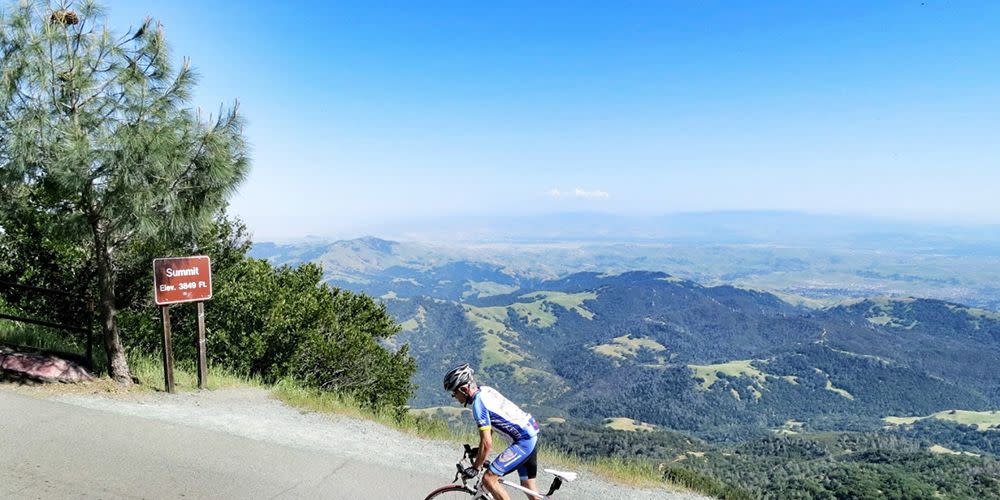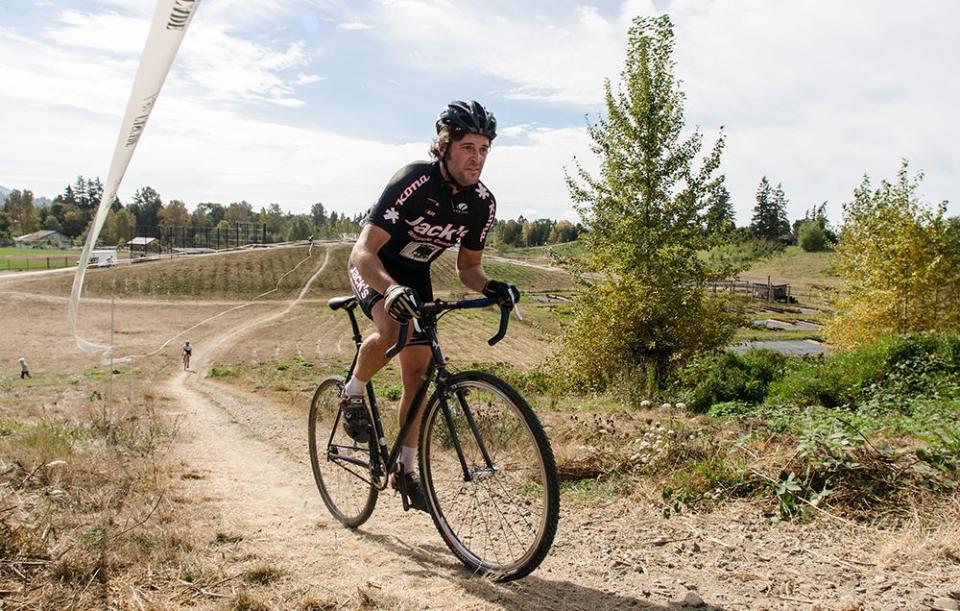How to Ride the Steepest of Climbs

Cyclists like to humble brag—or perhaps just outright brag—about the highest grades they’ve achieved. Wer'e not talking about the kind teachers dish out in school, but rather the inclines mountain roads dish out—which cyclists inevitably want to tackle.
For every 100 feet forward you travel on hilly terrain, you also travel vertically a certain number of feet. That vertical distance is expressed as percent grade. As in school, the highest grades—and there are some doozies out there; Canton Avenue in Pittsburgh, Pennsylvania, includes a record 37-percent grade—are the hardest to achieve.
But even relatively lesser (but still flipping steep) grades of 10 to 15 percent are really challenging, especially if they’re also unrelenting. Acing these climbs requires not only power and fitness, but also proper position and finesse (which also can help make up for shortcomings in the former). Here’s how to make the grade on any grade.
RELATED: The Best and Hardest Hill Climbs in the US
Hold on loosely: You want every watt you produce going into your pedals, not wasted away as you grit your teeth and white-knuckle your bars. Think, “I got this,” or another version of positive self-talk. Then relax your shoulders, hands, and face. Lightly tuck in your arms so your elbows are outside of your hips. Erase every ounce of unnecessary tension. Keep your shoulders down and back, so your chest is open and you have plenty of breathing space.
Use your gears: Yes, it’s blatantly obvious, but pretty much every one of us still fails to shift properly at one time or another. Making that mistake on super-steep pitches is a recipe for dropped or broken chains, both of which will send you in the opposite direction of what you’re shooting for. Shift into a gear that you can spin fairly easily before you hit the hard part. As soon as you feel the pressure on your pedals increase, shift again. At some point you’ll likely run out of gears, but you won’t be stuck in a higher one than you want.
Related: If you know you’re going to be attempting some massive ascents, be sure your bike is equipped with the right gearing. Most road bikes come equipped with compact (50/34 or 50/36) cranksets these days, which can help you keep spinning when you might otherwise resort to mashing—or pushing. Running a cassette with climbing gears, such as an 11-27 or 11-28, can help enormously.
RELATED: The Biggest Mistakes You're Making on Climbs
Push through your heels: Your feet are powerful allies up steep climbs, as they are the platforms that put power into each pedal stroke. (This is what a perfect pedal stroke looks like.) By keeping your feet flat (as opposed to toeing down) and pushing through your heels, you maximize the power transfer from your calves.
Sit, but shift: You’ll save energy and climb most efficiently by staying in the saddle most of the way up. But that doesn’t mean you should just park it in one place and churn and burn to the crest. Periodically shift your weight forward and back on the saddle to use a fresh set of muscles. Sitting rearward on the saddle balances the effort between your quads and hamstrings and engages your glutes. Moving forward emphasizes your quads.

Stay out of the red: You’ll be breathing hard, but you shouldn’t be pushing a pace so hard that you’re gasping like a fish out of water, because you’ll last just as long—your heart rate will soar above lactate threshold and your legs will start burning and shutting down. Keep your effort at a level where your breathing is rhythmic and controlled.
Lean in: As the hill steepens, keep your weight evenly distributed over your wheels by leaning your torso downward toward the bars (where the term “gnawing on your handlebars” comes from). This will prevent your front wheel from losing traction as you gently pull on the bars and deliver power to your pedals.
RELATED: 6 Ways to Climb Hills Better Right Now
Take a stand: As you approach the top of the climb (or to give your legs a stretch break during long climbs), get out of the saddle to use your body weight to help push your pedals. Shift into a harder gear before you stand, so you maintain momentum and don’t 'toss' your bike behind you as you leave the saddle. Keep your weight centered over the bottom bracket and your hips back over the saddle to avoid losing rear-wheel traction. With your hands on the hoods, gently press side to side into the bars to allow the bike to rock slightly back and forth underneath you. Because you’re using all your body weight when you climb standing up, this position uses about 10-percent more energy and sends your heart rate up about the same percentage, so only stand when you absolutely need to and/or to power over the top of the climb. (Try these standing interval workouts to get more watts with every push.)
Tack with care: The fastest way from point A to point B is a straight line—until you’re on a 25-percent grade to the moon. Then, it’s sometimes faster to tack, or zigzag a bit, to effectively flatten out the gradient. Use this with care: You don’t want to weave out in front of other riders or worse, on coming traffic. So only tack up a pitch if you 100-percent have to, and know that the road is 100-percent clear.
You Might Also Like

